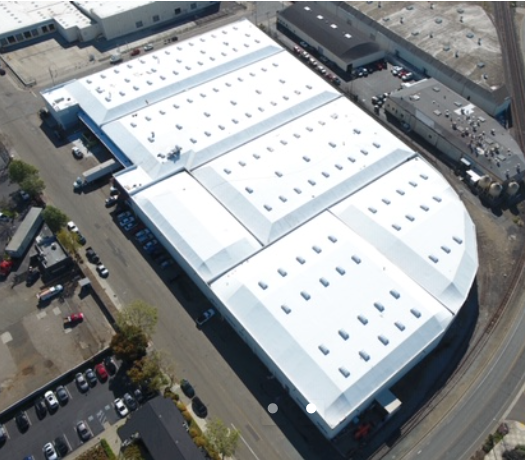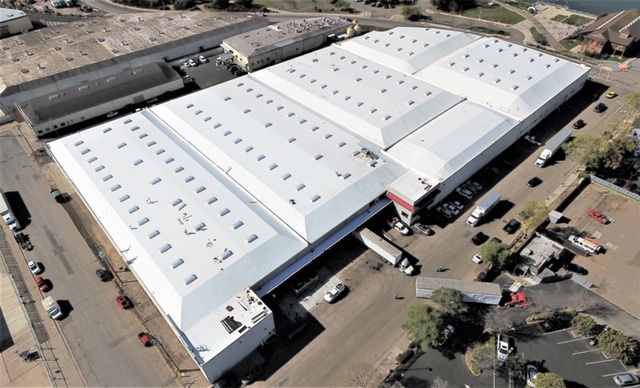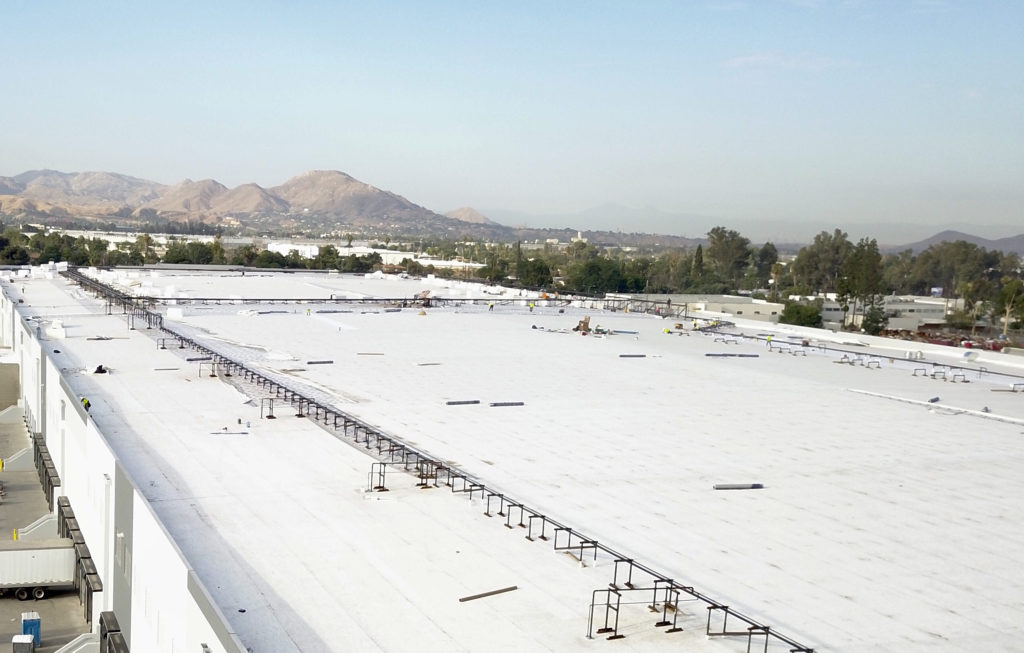How Single-Ply Roofing Benefits Commercial Buildings
If you’re looking at installing a new flat or low-slope roof on a commercial structure, you’ve got many more options available than you would even a few years ago.
The commercial roofing industry has experienced a major evolution over the past few years. While many commercial roof systems still hold to conventional built-up roofing (BUR) processes, new technologies like single-ply roofing have made commercial roofs much more durable, affordable, and easier to install.
Let’s take a closer look at single-ply roofing — what it is, how it differs from more traditional roofing types, and its advantages for commercial buildings in general.

The Concept of Single-Ply Roofing
To understand the value of single-ply roofing, it helps to understand what has come before it.
For many years, the go-to process for commercial roofs was built-up roofing (BUR), a time-consuming, labor-intensive process of embedding roof felts in hot asphalt, laying them 3-5 layers thick, then covering them with gravel.
In the 1970s, modified bitumen membrane roofing systems came into vogue. These included styrene butadiene styrene (SBS), a rubber-based modified bitumen membrane, and atactic polypropylene (APP), which modified the bitumen with crystalline plastic. Both SBS and APP continue to be popular for their flexibility and durability against the elements. However, the installation method still typically involves a 3-layer process — a base ply plus an adhesive to hold the membrane top layer.
Today, however, single-ply roofing is rapidly becoming a dominant contender among modern commercial roofing materials. Unlike other membrane systems like SBS and APP, a single-ply roofing membrane consists of one layer of material which can be installed directly onto the substrate — without compromising quality, durability, or protection. Roofing contractors love it for its ease of installation, and building owners love it because it is cost-effective.
Common Types of Single-Ply Roofing Systems
Not every single-ply roof type is right for every roof, and certain factors like climate, budget, and other practical priorities may come into play. Let’s take a look at the three most common types of single-ply membrane systems.

Ethylene Propylene Diene Monomer (EPDM)
EPDM is a synthetic rubber material derived mainly from ethylene and propylene, valued for its durability and ease of maintenance.
It is typically attached with adhesives, fasteners, or occasionally ballasted with a gravel top layer, with the seams sealed by tape or liquid adhesives. EPDM roofing’s advantages are its eco-friendliness and its long life span (30-50 years) due to its ability to reflect damaging UV rays.
The downside of EPDM membranes is that they tend to shrink and become prone to damage at the end of their lifespan (unless reinforced with a polyester scrim). Additionally, EPDM naturally comes in black, absorbing heat and making the building hotter (unless you spend extra for the white version).
Thermoplastic Polyolefin (TPO)
TPO roofing is made from a thermoplastic polymer of polypropylene and ethylene-propylene rubber. It is available in various colors, is usually chemically adhered to the roof substrate (although sometimes it may be mechanically fastened), and the seams are fused with a hot air gun.
Like EPDM roofs, TPO is UV resistant and eco-friendly, but with the added advantage that its reflectivity makes it a “cool roof,” keeping buildings cooler in summer and saving on energy costs. It is also fairly easy to install.
TPO has a slightly shorter life expectancy than EPDM, plus its heat-sealed seams are more prone to vulnerabilities that can cause roof leaks, especially if not properly installed.


Polyvinyl Chloride (PVC)
Like TPO roofing systems, PVC roofs are thermoplastic membranes. PVC is vinyl — a combination of ethylene and chlorine typically reinforced with polyester or fiberglass. It may be fully adhered, mechanically fastened or ballasted, and the seams are sealed with hot air.
The primary advantage of PVC roofing is its heightened resistance and durability. It is highly resistant to fire, water, chemicals, mold, and plant roots. It also holds up well against high winds, making it an excellent roofing option for places that are prone to hurricanes or other types of severe weather.
The downsides: PVC can become brittle and crack in colder temperatures, and roof repairs may become costly. Additionally, the production of PVC releases toxic chemicals, so it’s not a popular option with the environmentally conscious.
RoofSource is a building products manufacturer representative company that connects architects, contractors, building owners, and property managers with the highest quality single-ply roofing products manufactured by leaders in the roofing industry.
Contact us today to learn more about different roofing solutions and how we can help with your next project.
